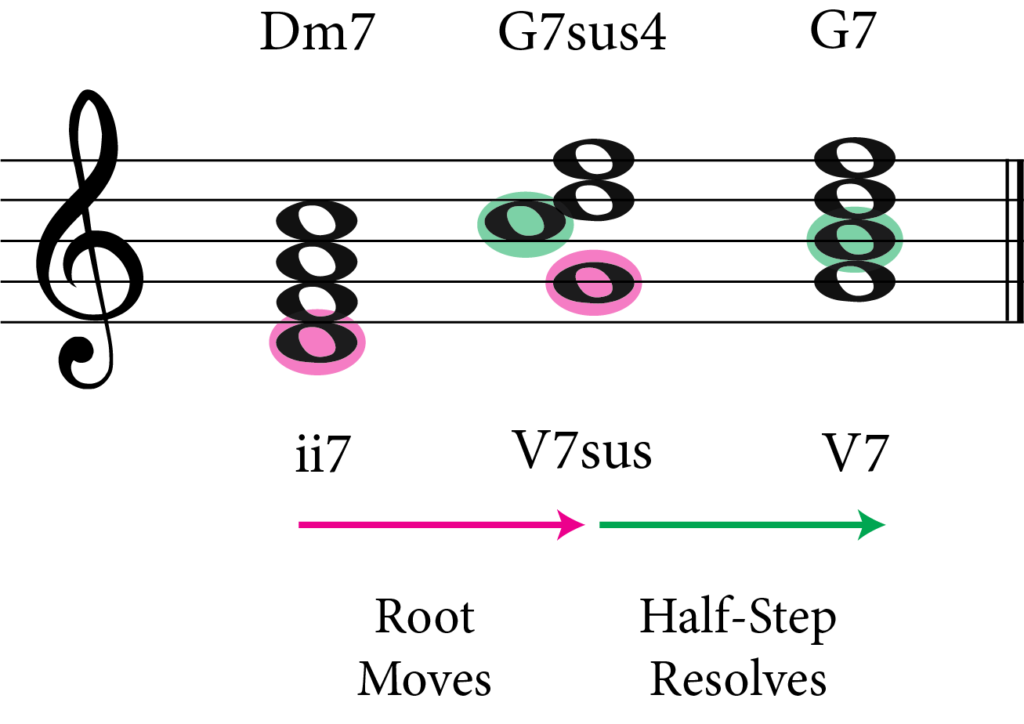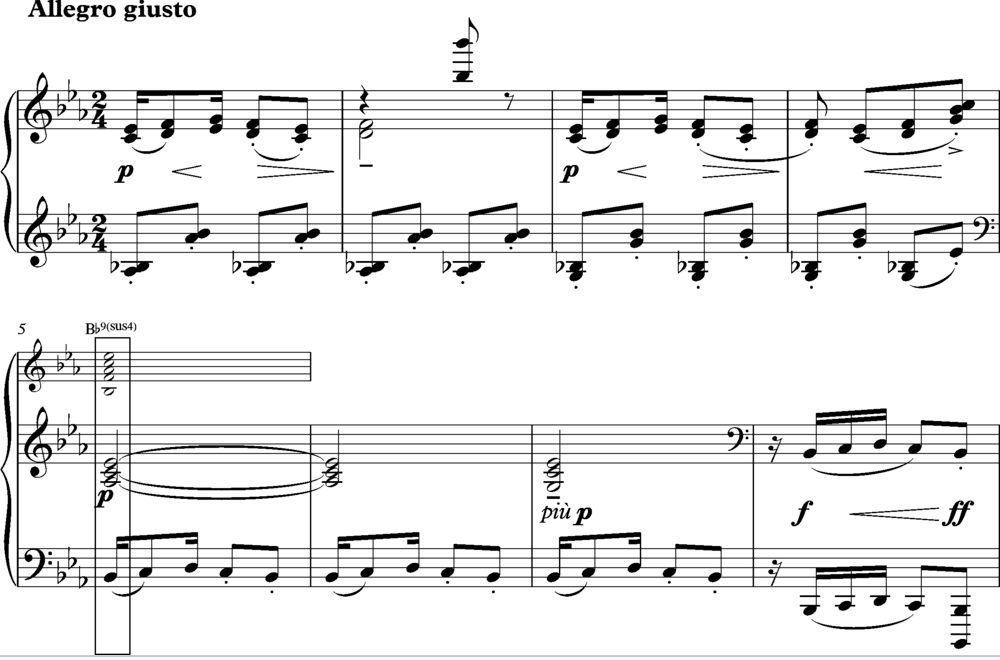Music is most often made up of chords. Chords can form chord progressions which help to build the harmony of a piece.
Our most common chords are major chords and minor chords but harmony is made up of many more chords and one such chord is the suspended chord!
We’re going to dive straight into suspended chords, but if you want an overview of what a chord it, check out our complete guide to chords.
What is a suspended chord?
A suspended chord is very different to your typical triad chord as it is a chord that is not made up entirely of thirds.
A suspended chord is essentially a major triad but with the third of the chord changed. The most common suspended chords are sus 2 or sus 4, meaning that instead of having a major third above the root note you will have a major second (sus 2) or a perfect fourth (sus 4) above the root.
Remember that it is the third of a chord that makes a chord a major chord or a minor chord and so suspended chords are neither major or minor!
Let’s look at the example of a d chord. The usual d major chord would include the notes D, F#, A. A suspended chord will keep the D and the A (the outer notes), but will change the third to either a second above the root or a fourth above the root.

The notes in a D major sus 2 chord would be D, E and A
The notes in a D major sus 4 chord would be D, G and A.
Let’s take a look at one more example, here is a c major chord. The notes in this are C, E, G.

C sus2 would have the notes C, D, G.

C sus4 would have the notes C, F, G.

Suspended chords in music are used to add more tension. By replacing the third of the chord with either a second or a fourth we create a pull for the chords to resolve to the original triad.
How do you label these chords in music?
Depending whether you use the second or the fourth above the root you will label the chord with either sus2 or sus4.

Where do we use suspended chords?
One of the most common places to use a suspended chord is within a chord progression to add a bit of embellishment to the progression and to prolong it.
The most common progression we see it in is ii7-V7-I and this is most commonly seen in jazz music, although it appears a lot in classical music as well! If we look at this progression in the key of C we will have the following chords.
Dm7 – G7 – Cmaj7

Dm 7 is a stable chord giving a consonant sound. The dominant chord G7 adds a bit of tension which then needs to resolve to the tonic chord C major 7. To learn more about the V-I progression make sure to check out the blog on cadences as V-I is a perfect cadence!
Lets now look at the section where we have chord ii7 – V7 (Dm7 – G7). To move between these these two chords we have to move the root from D-G and the 7th in the D minor 7th chord needs to resolve down a semitone (half step) to the 3rd of G7, B.

This can be divided into a two step process which uses a sus chord. This would mean first the root moves and then the half step resolves. This will result in the following progression Dm7-G7sus-G7.

Ear Training and Chords
To develop as a musician you’ll want to be able to recognise chords by ear. This is where ear training comes in. My recommendation for this is Tonegym as they have a comprehensive and fun program for training your ears! It’s what has gotten the best results with for my own students.
In the ‘tools’ section of their site, Tonegym even have a chord player that allows you to listen virtually any chord.
For an in-depth look at ear training, here’s my full review of Tonegym.

Why do we use suspended chords?
Suspended chords add a mild tension to a piece of music and are most commonly used to drive the music back to the tonic, particularly in classical music.
As we have seen above jazz music make use of the suspended chord in a very similar way but it does not always resolve to the tonic alternatively it will resolve to the dominant seventh chord. Jazz players will usually only used the sus4 chord, rather than the sus 2.
Examples of suspended chords
A famous example of using sus chords is in the jazz piece ‘maiden voyage’. A sus chord adds a lot of movement to a piece hence the title ‘voyage’ as it feels like you are on a journey!
The main chord sequence in this piece is D7sus9 – F7sus9 – E7sus13 – Dbm9

As you can see we have numbers such as 9 and 13 written next to the chords, these are what we call extended chords and you can read a bit more about that here.
There are many more examples of the use of suspended chords in jazz but in popular music, we can look at the piece pinball wizard by The Who. The main guitar riff in this piece uses the chord Bsus – B major.
You can also take look at Tom Petty’s ‘Free Fallin’. The first two chords of this song are F major to Fsus4.
We can also see this use of suspended chords in classical music as well!
A great example is in Debussy’s ‘Golliwogs Cakewalk’. In Bar 5 we can see the use of a sus 4 chord. To be specific it is a Bb9(sus4). The notes involved in this chord are: Bb, Eb, F, A, C. In the example below you will see the notes: Bb, A, C, Eb.

There are many more examples of the use of suspended chords throughout all genres of music. Have a look and let us know if you find any!
Suspended chords are an interesting way of adding extra interest into your melody or song. A suspended chord literally means that a note from the previous chord is suspended into the next one and then resolved!
What’s Next…?
- Learn about altered chords
- Learn more about seventh chords.
- Looking for a beginner-friendly overview of chords: check out our beginner’s guide to chords.
